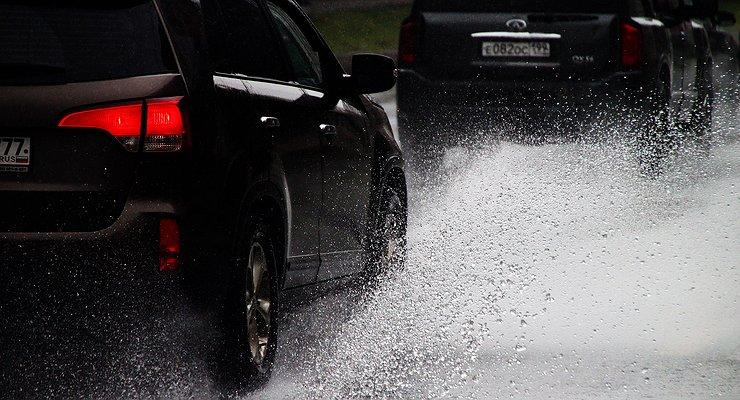
Driving a car during a storm. What to remember? What not to do?
 The real summer is yet to come, so many more dangerous and sudden weather events await us. This can be a major inconvenience for drivers.
The real summer is yet to come, so many more dangerous and sudden weather events await us. This can be a major inconvenience for drivers.
Research by the Institute of Road Transport, including data from the Polish Road Safety Observatory ITS, unequivocally proves that the highest number of traffic accidents occur in good weather conditions, in months when it is warm and the days are long. Then drivers tend to drive fast and recklessly. Accidents also occur as a result of adverse weather conditions, including storms, gusty winds and heavy rainfall, typical of the summer season.
Severe weather events carry the risk of loss of health and even life. At the same time, it is worth reassuring that in the event that a car driver gets into a severe thunderstorm, as a result of which lightning enters the car body, the risk to people inside is negligible. Then the body will work like a so-called Faraday cage. Protecting from an electrostatic field, it will force the lightning discharge to literally "drain" along the metal case to the ground. Thus, the interior of the car seems to be the safest place, although the very action of lightning can affect the fragile electronic components that are stuffed with modern cars.
How to behave in a storm?
If the alarming weather forecast coincides with travel plans, the first thing to think about is changing them. If we receive additional warning messages, especially from the National Security Center (RCB), then they should not be underestimated!
If someone cannot wait, he should plan his journey in such a way that in case of a storm he will find shelter in advance. When the driver of a vehicle sees a storm coming, he has no choice but to get off the road as quickly as possible and look for a parking space away from trees and tall steel structures. On the route, the best cover will be a covered gas station and a multi-storey car park in the city.
See also: driver's license. Can I watch the exam recording?
Pulling over on the side of a busy road and turning on your hazard lights is not a good idea. Due to poor visibility due to heavy rain, there is a risk of collision with a vehicle coming from behind. Such a scenario is an exemplary carom recipe. Leaving the salon even in reflective vests is also not the best solution. If someone has to leave, then this should be done from the side of the road, since in a collision with a car, a pedestrian is always in a losing position - already at a speed of over 60 km / h, 9 out of 10 pedestrians die as a result of the impact. By staying in the car, we increase our chances of survival, especially since cars have crumple zones that are precisely controlled in the event of a collision, seat belts that protect the body from inertial displacement, gas bags to minimize bodily injury and head restraints that protect the head and neck from injuries. In addition, in addition to the car, passengers, breaking and falling branches on forest roads and elements of power lines are exposed to potential lightning strikes. When parking your car, avoid natural depressions in the terrain - so that it is not flooded and carried away by flood water.
What should you pay attention to during a thunderstorm?
If the driver is unable to stop the vehicle and must continue driving during a storm, the natural duty is to exercise extreme caution. Slow down and increase your distance from the moving vehicle. Heavy rain lengthens the stopping distance, fogs up the windows and significantly impairs visibility (especially when driving behind large vehicles). Lightning and sudden flashes also cause scattering while driving, which can blind the driver. A poorly cleaned windshield should not cloud the driver's vision. Wiper blades should be in good condition and windshield fluid should be certified.
Due to the heavy rainfall that accompanies major hurricanes, sewers in cities can have problems draining water through which the surface and what potentially lurks there is not visible. Hitting, especially sudden, into deep puddles, i.e. those that reach at least the lower edge of the door carries a serious risk of failure of the car - its electronics and engine. Dynamic driving in puddles can also cause hydroplaning (tire failure to grip the ground) and loss of vehicle stability. Therefore, the speed should be adjusted according to road conditions. It is also important not to splash other road users, especially pedestrians and cyclists, when crossing water.
See also: Jeep Wrangler hybrid version